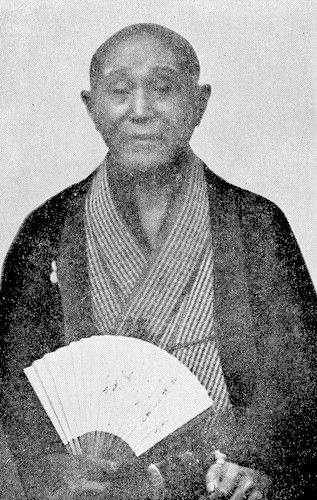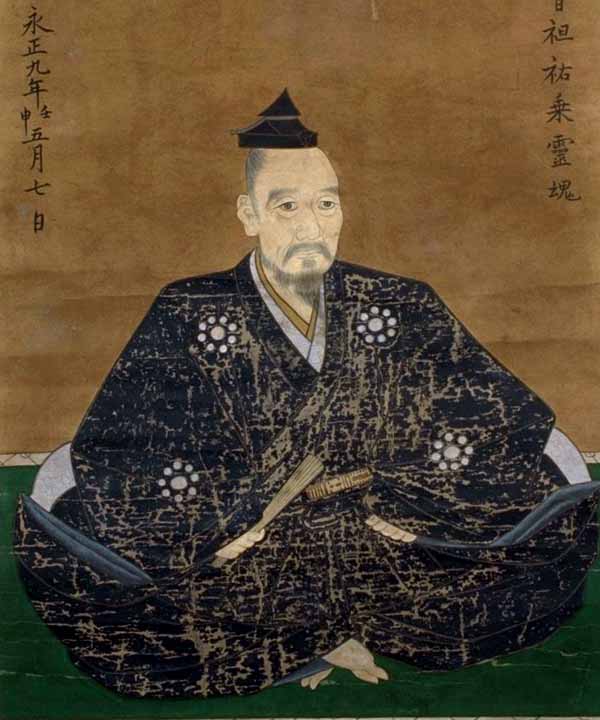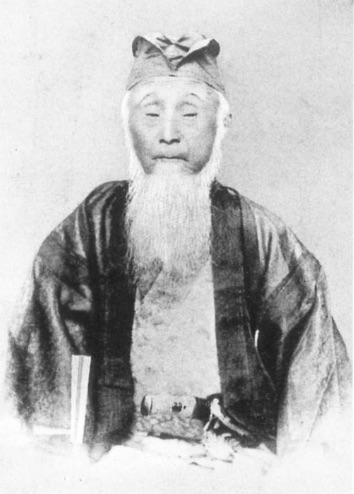Before we start, I want to apologize for my recent posts being more brief than usual. Those who follow my page know why and when things have calmed down, i.e. when I have settled in with my new job, and place, I will get back to more detailed and “substantial” articles.
Now this time I want to introduce the tantō that Gotō Ichijō (後藤一乗, 1791-1876) had received as a gift from the bakumatsu era master swordsmith Koyama Munetsugu (固山宗次, 1803-?) and which he owned for the rest of his life. So let’s portray the careers of these two artists.
Picture 1: tantō, mei: “Bizen no Suke Munetsugu kore o saku – Kōka sannen hachigatsu hi – Zō Ichijō Hokkyō” (備前介宗次作之・弘化三年八月日・贈一乗法橋) – “Made by Bizen no Suke Munetsugu on a day in the eighth month of Kōka three (1846) as a gift for Ichijō Hokkyō”; nagasa 31.2 cm, sori 0.2 cm, motohaba 2.7 cm, hira-zukuri, iori-mune
First of all, both Ichijō and Munetsugu were already renowned artists at the time the blade was made, which was in Kōka three (弘化, 1846), and very busy with fulfilling orders. That is, Ichijō was 56 and Munetsugu 44, following the Japanese way of counting. Let me begin with Koyama Munetsugu. Munetsugu started his career as smith for the Shirakawa fief (白河藩) of northern Mutsu province which was then ruled by the Hisamatsu-Matsudaira (久松松平) family. So far so good but in Bunsei six (文政, 1823), the bakufu decided that the Hisamatsu-Matsudaira needed to be transferred, and that is, to the Kuwana fief (桑名藩) of Ise province what basically cut their annual income by half. There are some theories why this happened but I don’t want to go into too much detail here and suffice to say, Munetsugu remained employed and was able to keep his job. However, he did not proceed to Kuwana right away but stayed for six more years in Shirakawa, i.e. his move down to Ise took place in Bunsei twelve (1829). Just two years later, he got the chance to go to Edo to work for the fief from its capital premises, which means that Munetsugu was now “where everything happened.” Well, there was a brief break from that as in Tenpō six (天保, 1835), Munetsugu worked for an unknow but short period of time for the Owari-Tokugawa family, i.e. directly from Owari province. We can only speculate why that employment did not continue (maybe it was a temporary contract in the first place) but the then Owari-Tokugawa head, Nariharu (徳川斉温, 1819-1839), tried to revive the economy of his fief but failed first badly as he was wasting so much money with his own ventures. In short, Nariharu eventually received a stern warning from his imperial tutor and obeyed so Munetsugu was probably laid off and that is why he returned to Edo and back into the employment of the Matsudaira.
Well, Munetsugu was just looking back at a very successful time in his career and one year before the blade introduced here was made, i.e. in Kōka two (1845), he had received the honorary title Bizen no Suke (備前介). In concrete terms, we are talking about the Tenpō era (天保, 1830-1844) and a large number of Munetsugu’s works and also of his greatest masterworks go back to that period. Or in other words, it was a few years in the Tenpō era when his career really took off. Incidentally, that was also the time when Munetsugu started his cooperation with the Yamada Asa’emon (山田浅右衛門) family of sword testers.
Picture 2: Gotō Ichijō
Back to Gotō Ichijō. The time the blade was made, the artist had been working for about two decades under his Ichijō name and that with holding the Buddhist priest rank of a hokkyō. He had received that rank after making in Bunsei seven (文政, 1824) the fittings for a tachi of Emperor Kōkaku (光格天皇, 1780-1817). When we look at Ichijō’s career through the lens of extant dated (and precisely datable) works, we recognize two small breaks, one from 1829 to 1832 and one from 1843 to 1846 (the year the very blade introduced here was made). As mentioned, this observation bases on dated/datable works so Ichijō may well have been very busy but did not finish works during these years, possibly working on too many projects at the same time. Also, the Gotō were going through kind of a difficult time right after 1845 as the bakufu discovered a major corruption scandal around one of them, Gotō San’emon Mitsumichi (後藤三右衛門光亨, 1796-1845), who was the 13th Gotō head of the bakufu mint and who was sentenced to death and decapitated in 1845 for his involvement. We don’t know if that incident affected Ichijō at all but it is surely not helpful if one of your relatives, and your family name, is – in that negative manner – all over the news.
This bring is right back to the blade. It is interesting to see that it was a gift as mentioned and we know that Munetsugu and Ichijō were working together on sword orders so this was not a one-time brief touching point of the career of these two artists. Also we know that Ichijō owned that sword until the end of his life, and wore it too (more on this shortly), so we may imply that it had a special meaning for him. So maybe this gift was Munetsugu saying “Hang in there!” and Ichijō was indeed going through difficult times. Or maybe it was all completely different and everything was perfectly fine and the blade was just a nice gesture on part of Munetsugu. Or, another theory, it marked the start of a successful cooperation and friendship.

Picture 3: koshigatana-koshirae with birch andfuemaki flute-style saya which is a work of master lacquer artist Hashiichi (橋市) who lived close to Ichijō, fittings en suite of polished oborogin with gold and silver hira-zōgan ornamentation (menuki and kozuka of shakudō with nanako ground)
In any case, Ichijō made his own fittings for the blade and the full koshirae can be seen in picture 3. The dashi-menuki on the unwrapped hilt depict pairs of 3-5-3 kiri crests for which the Gotō family became famous for, e.g. Tokujō (後藤徳乗, 1550-1631) designing it for Toyotomi Hideyoshi, and on the kozuka we see kuyō crests, i.e. the crest of the Gotō family of kinkō artists worn by them since at least the time of their ancestor Yūjō (後藤祐乗, 1440-1512) (see picture 4)
Picture 4: Gotō Yūjō
Now we don’t know if Ichijō made the fittings, and had the koshirae parts made, right when he got the blade from Munetsugu, if he mounted it a certain way for the time being and redid everything at a later point, or if he had just kept the blade in shirasaya for some time and then decided to have it mounted with his own fittings at one point in his life. What we do know for certain is that he was wearing the blade in this koshirae as there exists “photo evidence” for that (see picture 6). A hint on when he made the fittings (and had Munetsugu’s gift blade mounted) may be hidded in the fittings as kurigata, kashira, and kojiri bear the inscription sen-kannin (専堪忍) (see picture 5) which basically means “forbearance/patience.” So, we can speculate that Ichijō chose these characters after going through some kind of difficult times in the mid-1840s, and Munetsugu did indeed present him with this blade to cheer him up, or much later when he was looking back on a very successful career and chose “forbearance/patience” as motto of life. As mentioned, just speculations, but it is so enjoyable and rewarding to reflect on these things.
Picture 5: kurigatga, kashira, and kojiri
Picture 6: Portrait of Ichijō wearing the sword in question.
It is assumed that picture 6 was taken when Kyōto Prefectural Governor Hase Nobuatsu (長谷信篤, 1818-1902) entrusted Ichijō in Meiji six (明治, 1873), i.e. three years before his death, with a post at the Meiji Restoration’s Encouragement of Industry venture which turned into the concrete first Exhibition for the Industrial Promotion of the Country (kokunai-kangyō-hakurankai, 国内勧業博覧会) two years after Ichijō died (and where subsequently many of the famous kinkō artists of the Meiji era participated).





